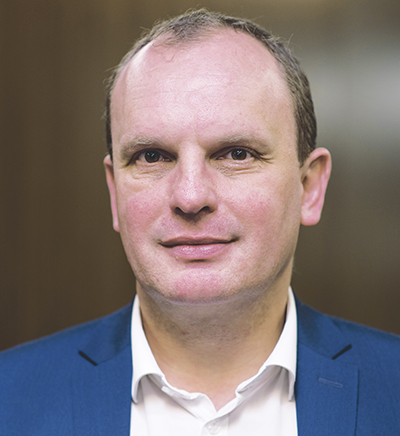
How do you get senior stakeholders to buy into the processes required to comply with the golden thread? What first steps should you take towards adopting digital to support delivery of the golden thread?
These were two of the key questions asked by public sector staff at the second Connected Local Authorities group event – held in April and hosted by Autodesk – that focused on the golden thread of information in preparation for the Building Safety Bill being enacted.
Connected Local Authorities is a biannual event curated by local authorities for local authorities with the aim of sharing experiences and best practice to address the specific challenges faced by the sector.
Autodesk facilitated with support of the founding members from Hammersmith & Fulham Council, Hampshire County Council, Luton Borough Council, Portsmouth City Council and Southampton City Council.
A handful of experts answered the questions:
- Terry Stocks, director UK head of public sector at Faithful+Gould and member of the Local Authority Digital Working Group;
- Dave Peacock, technical director at TÜV SÜD and involved in the UK BIM Alliance and UK BIM Framework;
- Keith Heard, commercial manager at Hampshire County Council, framework lead of SCF Frameworks, and chair of the National Association of Construction Frameworks; and
- Marek Suchocki, global business development executive at Autodesk.
What is the best way to convince senior stakeholders of the benefits of getting started on an early-stage proof of concept trial?
Terry Stocks: “Senior leadership needs to have the belief themselves that adopting a digital information management approach is the right thing to do. There are many great reports out there, for example Accenture’s Winning with Analytics, that state that organisations and, more importantly, the leaders of those organisations, are significantly more successful when they use data to make decisions and track delivery. It’s not a big bang that’s required: you can take baby steps to enable a low cost.”
Are there wider (digital) benefits for an organisation if they set themselves up to deliver the golden thread?

“Senior leadership needs to have the belief themselves that adopting a digital information management approach is the right thing to do.”
Terry Stocks: “The golden thread takes us on a digital journey and a level of digital maturity that will help organisations deliver much, much more efficiently and with greater benefit moving forward.
“There are wider organisational benefits of enabling the golden thread as an organisation starts to create a fully digital information management and planning process. For example, there are benefits in being able to have more insight for programming decisions to drive operational efficiencies and as we start to move towards zero carbon. Regarding delivery requirements, having that sort of reliable data set is going to derive benefit.”
What are the first steps to adoption of the golden thread?
Dave Peacock: “The golden thread at its core is largely information management. First steps are to do a discovery to understand what systems and processes are already in place within your organisation, then see how you can better utilise them for the purpose of fire or building safety, and what you want to do with that information.”
How might the Construction Playbook enable or mandate change in digital technology adoption in the local authority sector?
Marek Suchocki: “The Construction Playbook is a great entry to helping digital adoption, and sets out key policies and guidance for how public works projects and programmes are assessed, procured and delivered.
“For those not familiar with it, the Playbook has 14 policy reforms, recommended to public agencies and they include some procedure and organisational changes, including the way we procure frameworks for delivery of consistent services, and how we look at outcome-based requirements.”
How can authorities be assured they have competent and qualified contractors/consultants?
Keith Heard: “Frameworks can play a beneficial part in sharing the experience from others and previous projects. What the regional, local government frameworks have learned is that you’ve got to properly pre-qualify consultants and contractors and not just for digital but also to meet all kinds of requirements around construction work, such as financial standing, and health and safety. BIM and digital is one aspect of the frameworks. The digital element has formed a key part of all local government frameworks since 2012 /2013.”

“The key to the golden thread and any data collection is consistency: gather the same data in the same way for each building/asset wherever possible.”
How can you digitise buildings/assets and what practical steps can you take?
Dave Peacock: “The digitalisation of assets can take many forms: the existing information could be paper/digital drawings, 3D models or scan data – all of these can be used as the starting point to digitalisation with the use of suitable workflows. The key to the golden thread and any data collection is consistency: gather the same data in the same way for each building/asset wherever possible. Consultants, specialist software and scanning companies can assist you on that journey.”
Marek Suchocki: “You must make the commitment to move from a 2D way of working to a 3D data structured approach. What you can do is start small and follow the guidance in the BIM Early Steps Roadmap and Toolkit for Local Authorities.
“To start small, for example, one of our business partners, Oculo, can build a three-dimensional representation, using a helmet-mounted camera as you walk around; it can either do progress monitoring or just build your 3D model and that’s something that can come with really low investment.”
Are there traditional processes in local authorities that you believe are holding them back from implementing new ways of working?

“Tt’s not about just getting the information digitally from a contractor or a consultant: it’s understanding what you’re going to do with it.”
Keith Heard: “For many local authorities, it’s not about just getting the information digitally from a contractor or a consultant: it’s understanding what you’re going to do with it, how you’re going to store it.
“You need to think wider about your digital adoption for the wider estate. There are all kinds of different FM models out there. If you don’t have the skills to procure that kind of thing, the Local Government Association would like to support and help people through that.”
Dave Peacock: “Skills are important. If you don’t have somebody in-house that already has that sort of digitisation skill, then you possibly need to bring somebody in for the short or medium term.
“You also need buy-in from people at all levels. If you only get buy-in from, say, the top tier of people within an organisation, then it often fails, because the people below don’t have that buy-in and don’t feel part of the journey.”
Marek Suchocki: “How do the departments work together? If planning still requires two-dimensional mock-ups, then that really isn’t a great starting point, because that sets a precedent for how the design side supplies information in the first instance.
“Regarding skills and culture, it would be great also to attract new people into the sector: in particular younger people leaving schools and universities.”
How do you transition 2D drawings to a 3D model if we pick up from 2D drawings? What are the first steps?

“Start small and follow the guidance in the BIM Early Steps Roadmap and Toolkit for Local Authorities to build on top of good practice.”
Marek Suchocki: “Start small and follow the guidance in the BIM Early Steps Roadmap and Toolkit for Local Authorities to build on top of good practice. Start with the end in mind. Take baby steps, and don’t boil the ocean. Focus on the big-ticket items where you’re going to get the biggest return. If 20% is easy, but that 20% gives you a net benefit of a 50% improvement, then you’re moving the needle in the right direction.”
What are the key steps to make the golden thread possible overall?
Marek Suchocki: “I believe the common data environment processes and solutions are fundamental. Start with the end in mind. Read the standards (ISO 19650) and look at the guidance from the Local Authorities Digital Working Group and the Centre for Digital Built Britain.”
Keith Heard: “You’ve traditionally got the supply chain in silos and even the client bodies in silos. I think there’s a growing realisation now with the Building Safety Act that you need a fully integrated team from the start to pull all this together.”
Don’t miss out on BIM and digital construction news: sign up to receive the BIMplus newsletter.














